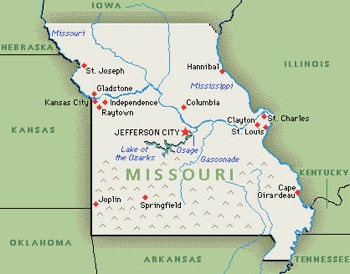 Back when Patton Dodd asked initially asked me to consider blogging for Bnet, he wanted to play on the “Dispatches” subtitle of my book. That is, he wanted to take advantage of my frequent travels to write about how the “emergent church” conversation is being embraced (or rejected) around the country and the world.
Back when Patton Dodd asked initially asked me to consider blogging for Bnet, he wanted to play on the “Dispatches” subtitle of my book. That is, he wanted to take advantage of my frequent travels to write about how the “emergent church” conversation is being embraced (or rejected) around the country and the world.
Well, I spent the better part of this week in central Missouri, addressing the annual continuing education event of the Missouri district of the United Methodist Church: the Missouri Ministers’ School.
On Tuesday night, I delivered my stump speech for the last year or so, “Ten Dispatches from the Emergent Church.” It was, I think, well received.
On Wednesday afternoon, I was on a panel with the other three presenters. Again, it went well.
And on Thursday morning, I had about an hour long public conversation with Missouri UMC bishop, Robert Schnase. That’s when the wheels came off.
He and I had, I think, a good conversation about the nature of the
church, and our ecclesiological differences were evident. The
Methodists call their inter-church ecclesiology the “connectional
model,” which was instigated by Methodism’s founder, John Wesley.
But earlier in the conference, I had encouraged the UMC ministers
present to stop filling out forms. The UMCers, by their own admission,
have to fill out an overabundance of forms — Schnase explained to me
that once per month, every church has to fill out a form that askes
four questions: How many professions of faith? How many baptisms? How
many in attendance? How many small groups? Then they also have to fill
out an extremely long and complicated form required at the end of the
year. One pastor told me that his secretary has been working on that
form and nothing else for the last two weeks.
Well, of course, it didn’t go over well with the bishop that I had told
his charges not submit their required reports. He refered to himself
as a “numbers guy,” he poked some fun at me by wondering whether I care
about numbers when it comes to book sales, and then he used an analogy
that others told me he uses regularly: He said that everytime you go to
a doctor’s office, the nurse takes your blood pressure, temperature,
and weight in order to track your health over time. He said this shows
that numbers can be a valuable indicator of health.
I took issue with this on a three levels. First, I think it’s a bad
analogy, and I think that church leaders are often rpone to bad
analogies. In his analogy, he (the bishop) is the physician and the
local church is the patient. That’s problematic in itself. But it
also brings up the question of how does one best gauge the health of a
local ecclesial community? Are those the best four questions to ask?
Probably not, as Willow Creek recently revealed.
I think the only way this analogy might work is if the pastor is the
physician and the individual congregant is the patient (though this has
problems, too). In that case, the pastor’s job is to gauge the
spiritual health of the parishoner by checking in regularly and keeping
track of spritual health over time. Then the onus is on the parish
minister to determine what are the best questions to ask.
Second, as the bishop admitted, the monthly reporting is a drain on
troop moral because, of the 900(!) Methodist churches in Missouri, the
vast majority go many months in a row with no professions of faith, no
baptisms, and flat or decreasing attendance. This is reflective of the
overall denoument of mainline Christianity in the U.S. Why not ask the
pastors to relfect on other indicators of spiritual vitality rather
than raw numbers?
Finally, I said that nurses take these stats every time you visit the
office primarily for liability reasons — to make sure they’re not
overlooking something like a spike in blood pressure. A nurse from the
back of the room shouted me down when I said that and said that’s not
why those numbers are taken. So, I could be wrong on that count.
